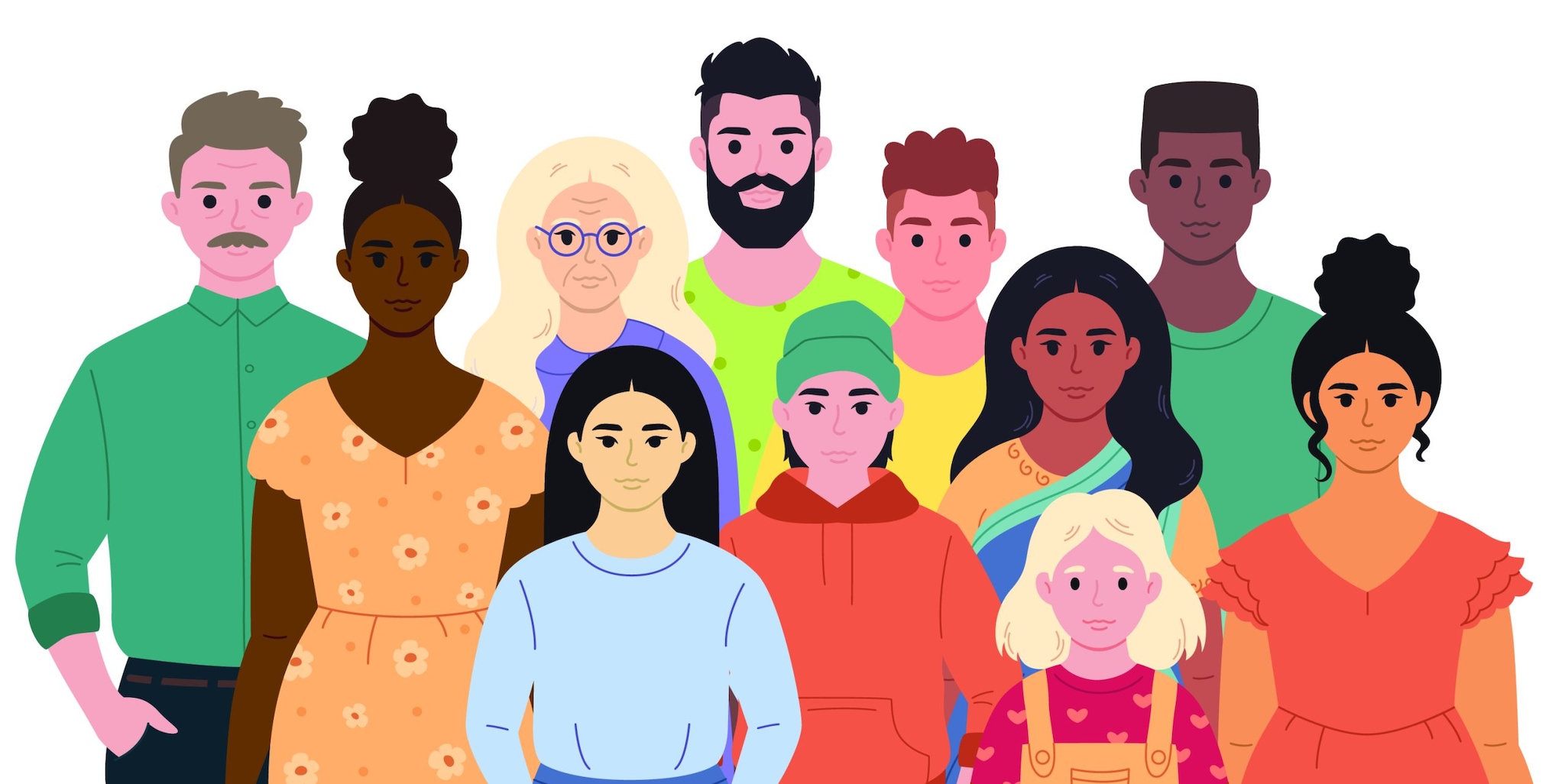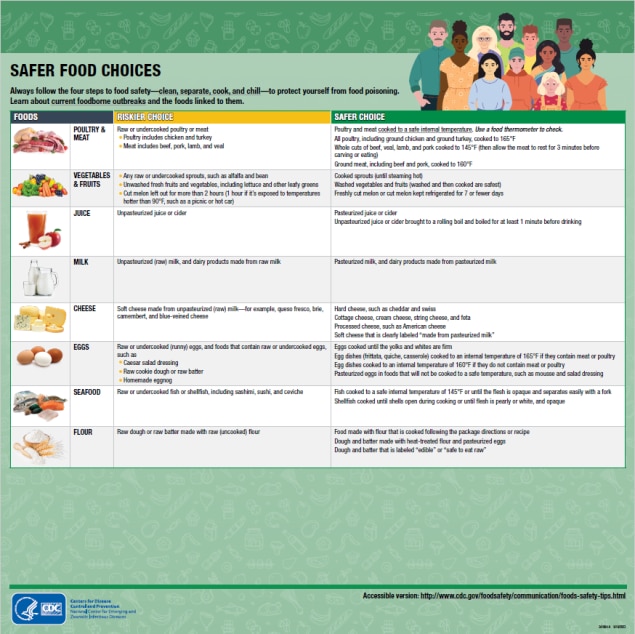At a glance
Learn which foods are more often associated with food poisoning and what are safer choices.

Why it's important
To prevent food poisoning, some foods are safer choices than others. That's because some foods—such as undercooked meat and eggs, unwashed fruits and vegetables, and unpasteurized milk—are more often associated with foodborne illnesses.
High risk groups
Some people are more likely to get sick and have a more serious illness from food poisoning. See specific recommendations if you are in one of these groups:
Safer food choices for general public
Use the table below as a guide to safer food choices.
| Poultry and Meat | |
|---|---|
| Riskier Choice | Safer Choice |
Raw or undercooked poultry or meat
|
Poultry and meat cooked to a safe internal temperature. Use a food thermometer to check.
|
| Vegetables and Fruits | |
| Riskier Choice | Safer Choice |
|
|
| Juice | |
| Riskier Choice | Safer Choice |
| Unpasteurized juice or cider |
|
| Milk | |
| Riskier Choice | Safer Choice |
| Unpasteurized (raw) milk and dairy products made from raw milk | Pasteurized milk and dairy products made from pasteurized milk |
| Cheese | |
| Riskier Choice | Safer Choice |
| Soft cheese made from unpasteurized (raw) milk — for example, queso fresco, brie, camembert, and blue-veined cheese |
|
| Eggs | |
| Riskier Choice | Safer Choice |
Raw or undercooked (runny) eggs, and foods that contain raw or undercooked eggs, such as
|
|
| Seafood | |
| Riskier Choice | Safer Choice |
| Raw or undercooked fish or shellfish, including sashimi, sushi, and ceviche |
|
| Flour | |
| Riskier Choice | Safer Choice |
| Raw dough or raw batter made with raw (uncooked) flour |
|
Safer Food Choices for General Consumers
Prevent food poisoning
Always follow the four steps to food safety—clean, separate, cook, and chill—to protect yourself from food poisoning.
Learn about current foodborne outbreaks and the foods linked to them.

